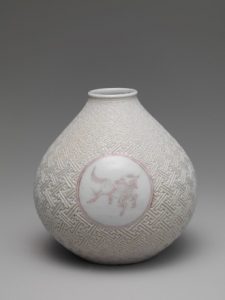Critical & Creative Thinking

Key Concepts
This chapter will prepare you to:
- Explain the concepts of critical thinking.
- Evaluate the merits of the questions, not just the answers.
- Evaluate the origins of our values.
- Discuss the implications of perceptions and stereotypes as they relate to an individual.
- Identify historical, geographical, and cultural contexts.
In the Introduction, we presented the idea of metacognition, which is the first step in applying critical and creative thinking to our study of the humanities. We all view the world through a lens; one shaped by our personal experiences. So, to objectively analyze a news story, cartoon, painting, photograph, essay, song, or any number of ways we express our human experience, we begin by being aware of how our brain works.
You may hear the phrase “critical thinking” used many times in a humanities course. In the context of humanities, critical thinking is the process of reflection about our personal values, paradigms, and experiences. Creative thinking is another important tool for studying the humanities. By “creative thinking,” we mean challenging what you think you know and asking you to think outside the box. Creative thinking also acknowledges and explores how other people may see or experience the world differently from us.
Throughout this book are Questions for Critical & Creative Thinking. These questions may present novel situations or be tough to answer. They are designed to help you reflect on why you perceive the world the way you do and perhaps why someone else might see things differently. Some questions may prompt you to expand your personal perspective.
The Looking Exercises and Listening Exercises included at the end of this chapter will help you practice these approaches to critical and creative thinking.
Creative Approaches to Critical Thinking
What is Critical Thinking?
A key component of critical thinking is analyzing a person or event from multiple perspectives. The opposite of critical thinking would be characterizing a group of people based on a singular experience with one individual. Not only does this limited perspective interfere with critical and creative thinking, but it may also lead us to treat people or situations with unrealistic expectations.
Credit: Chimamanda Ngozi Adichie. “The Danger of a Single Story.” TEDGlobal 2009. July 2009. CC BY-NC-ND 4.0 International. https://www.ted.com/talks/chimamanda_ngozi_adichie_the_danger_of_a_single_story.
Chimamanda Ngozi Adichie discusses the damage caused by people’s limited perceptions. She starts by sharing her perceptions of people from her childhood in Nigeria. She then moves on to other people’s perceptions of her and Nigerian culture when she was a student in the United States.
Questions for Critical & Creative Thinking
- Have you ever been subjected to a stereotype?
- Where do you think the basis of this assumption came from? Is there any truth to the idea?
- Do you feel like these stereotypes limit you or encourage you?
What Do We Know?
Our reaction to information—whether it comes via images, sound, or words—is informed by our value systems. Our value systems, in turn, are shaped by personal experience and learned knowledge.
Consider something as fundamental as clothing. The sight of a man wearing a skirt in Salt Lake City would be unusual enough that he would probably elicit some stares. However, maybe not from people living in Scotland or the Pacific islands. This is an example of a response informed by cultural context. In this case, about what is regarded as normal or acceptable attire for men to wear in public. There are also historical imperatives. In present-day society, men and women frequently wear jeans or pants. However, 100 years ago, a woman wearing pants was neither a common nor acceptable fashion statement.
Questions for Critical & Creative Thinking
Can you choose which of the following historical factors were at play to allow women in the United States the freedom to wear “men’s” clothing?
- The suffrage movement for women’s right to vote
- World War I and World War II (Hint: military conscription of men necessitated a female workforce.)
- The birth control pill
Think about what people considered normal in earlier historical settings and reflect on your own reaction.
- Do you think they are silly? Funny?
- Or were their standards acceptable because they were based on the information available at the time?
Let us look at another example, this time a symbol most likely associated with negative reactions. The swastika symbol was adopted by the Nazi party during World War II. Because of this, most people perceive the swastika as a symbol of murder and destruction.

Credit: United States Holocaust Memorial Museum Collection, Gift of Peter Storm. No restrictions on access. No restrictions on use. https://collections.ushmm.org/search/catalog/irn515313.
The origins of this symbol reach back much further than 20th-century Germany. The oldest known swastika is estimated to be about 15,000 years old, which puts it in the Paleolithic Period (Stone Age). Throughout history, the swastika was used in regions all over the world, including China, Japan, India, and southern Europe. It has been used to represent good luck, prosperity, and the sun. If not equipped with this knowledge before traveling abroad, it would be easy to assume that Nazi sympathizers had lived in these countries.

Credit: The Metropolitan Museum of Art. CC0 1.0 Public Domain. https://www.metmuseum.org/art/collection/search/46692.

Credit: Gisling. CC BY 3.0. https://commons.wikimedia.org/wiki/File:%E6%95%85%E5%AE%AB%E4%B9%BE%E6%B8%85%E9%97%A8%E6%A4%BD%E5%AD%90%E4%B8%87%E5%AF%BF%E5%BD%A9%E7%94%BB.JPG.
Questions to Critical & Creative Thinking
- Prior to reading about the history of the swastika, what conclusions might you have reached if you visited a building displaying a swastika on the wall?
- A swastika symbol on Japanese maps indicates the location of a Buddhist temple. In preparation for the 2020 Olympics, Japan’s national mapmaking department is considering changing the map symbol to something else. Do you think they should or should not change the symbol? Why or why not? Can you think of another way to resolve this issue?
What Is a Creative Approach to Critical Thinking?
As you might imagine from the swastika example, challenging long-held values or beliefs can cause conflict among people, and perhaps discomfort for an individual person. However, it is important to remember that critical and creative thinking does not require you to change your mind but rather, evaluate how you got there. One way to look at it is to imagine that critical thinking is like taking something apart, while creative thinking is like recycling or repurposing something. In the end, you may still end up with the same beliefs. Or you may discover you have acquired some new values.
Again, the goal is to get you thinking about how you think. In an early scene from the movie, The Matrix (1999), the character Orpheus offers the protagonist Neo a blue pill and a red pill.
“You take the blue pill, the story ends, you wake up in your bed and believe whatever you want to believe. You take the red pill, you stay in wonderland, and I show you how deep the rabbit hole goes.”
Likewise, by encouraging you to think critically and creatively, this course offers you a similar choice. You can superficially engage with the various artifacts presented throughout this book, skip the critical and creative thinking questions, and finish the book with your points of view pretty much unchanged. Or you can accept occasionally feeling uncomfortable as you delve deeper into how people across the centuries and around the world have tried to make sense of the human condition. Blue pill or red pill? You choose!
How to Approach an Artifact
Another critical thinking tool is the use and analysis of artifacts. A humanities artifact could be a piece of writing, music, painting, drawing, sculpture, dance, film, or any number of created works. In her article “A Method for Reading, Writing, & Thinking Critically,” Kathleen McCormick explains that we should consider the historical and cultural context when analyzing an artifact of written text. Additional contexts for approaching any type of artifact include economic, political, geographical, social, and religious, to name a few. These contextual pieces offer clues as to what may have motivated a person to compose or create an artifact. Analyzing context can also help us to determine how relevant an artifact is to our contemporary experiences.
In addition to considering context, it is important to ask a series of questions when approaching an artifact of the humanities. Critical and creative thinking encourages us to be actively engaged with a piece of text, music, or art. Some questions you should be asking yourself as you engage with the artifacts presented in this chapter, as well as the rest of the book include:
- Who is the author or creator of the artifact?
- What do we know about the artifact’s historical context, i.e., what was happening when the artifact was created?
- What was the inspiration or motivation for creating this artifact? For example, was it a commissioned piece or spontaneous creation?
- For written text, is there a narrative voice? If so, is it first person or third?
- Does who is speaking make a difference for a narrative?
- What is the main message the author or creator is trying to convey?
- Who, if any, is the author or creator’s intended audience?
- Does this artifact present a familiar concept or message? Is it something new for you?
- Does the author or creator’s message align or conflict with your values?
When we engage with humanities artifacts and then apply critical and creative thinking, we are not merely going through a process of decoding. Hopefully, this book helps you understand that analyzing the humanities using this approach is a sincere thoughtful process that helps broaden your understanding of what the humanities are and why understanding them is so important.
Looking Exercises: Architecture and Painting
These exercises will help you practice using critical and creative analysis of a humanities artifact through a couple of visual examples: building architecture and political painting.
The visual arts are a broad umbrella encompassing artifacts that are appreciated by looking at them. These arts include painting, drawing, sculpture, ceramics, photography, video, printmaking, crafts, architecture, textiles, and much more. These artifacts are the result of people trying to make sense of their physical and inner worlds, and conveying that understanding to other people.
An important first question to ask when considering a visual arts artifact is, was the work commissioned? Meaning, was the piece created at the request of someone else, such as a government, individual, nonprofit group, political group, or otherwise? Naturally, the sentiment embodied in the artifact and the intended audience will likely align with the values of the group or person who commissioned it rather than the artist who created it.
Other important questions might include, when was the piece created? What political issues were prominent at the time? What historical events were happening? By gathering as much contextual information as possible about the artifact, we are better equipped to interpret the artifact’s message or intention.
Architecture
The built environment reflects the age and cultural context in which it was produced. Architecture gives us easy access to visual arts artifacts for analysis. Some contextual questions we can ask:
- What does the style of architecture in my city tell me about the cultural influences of my society?
- Is there a philosophical influence?
- How old is the city?
- Does it maintain some of the influence of the original settlers? If so, how and where did that influence come from?
Architecture may also reflect a building’s function. Public buildings tend to be open and inviting. Some buildings may be designed to deflect attention. The nondescript architecture of homeless shelters helps conceal the vulnerable people living there. This kind of architecture is known as hostile architecture.
For this exercise, use the contextual questions listed above (as well as ones of your own) to analyze the architectural artifact presented by the White House in Washington DC, which was built in 1792. And compare it with Frank Gehry’s Disney Concert Hall, built in Los Angeles in 2003.

Credit: Joyce N. Boghosian. CC BY 3.0 US. https://www.whitehouse.gov/about-the-white-house.

Credit: Pedro Szekely. CC BY-SA 2.0. https://commons.wikimedia.org/wiki/File:Walt_Disney_Concert_Hall,_LA,_CA,_jjron_22.03.2012.jpg.
Painting
Looking at a piece of art, we can ask whether what we see relates to our contemporary setting. Sometimes, in order to fully understand an artifact, we must be familiar with the historical, political, or social context surrounding its creation.
The painting Guernica by Pablo Picasso was first displayed in Paris on May 1, 1937. He painted it during the midst of the Spanish Civil War (July 1936–April 1939) as an artistic reaction to the Nazi’s bombing of the Basque town on April 26, 1937. The painting is monochromatic, to show the misery inflicted by the aerial bombardment. The images in the painting present the tragedy and suffering of the war: a dismembered soldier and nurse; an all-seeing eye; and the Spanish symbols of a bull and a horse.
One contextual question to ask is, does Picasso’s painting only hold relevance to the Spanish Civil War? Two examples of contemporary situations demonstrate that this painting can be relevant beyond what Picasso may have originally intended. In fact, this artifact presents timeless relevancy to the perception, interpretation, and expression of our human experiences during a war.
On February 28, 1974, Tony Shafrazi entered the Museum of Modern Art in New York City, and red-spray painted the words “Kill Lies All” over the Guernica. Shafrazi said this was “a protest against the release on bail of the lieutenant later convicted for his role in the My Lai massacre during the Vietnam War.” The red paint was easily removed, as Guernica was heavily varnished.
On February 5, 2003, Colin Powell delivered a speech at the United Nations (UN) headquarters to make the case for war with Iraq. He was standing in front of a tapestry of Picasso’s Guernica, which hangs in the UN as a reminder of the horror of war and the need for diplomacy first. The tapestry was covered with a blue sheet.
Reports of the UN’s position behind this action vary and the organization did not release an official statement. However, using contextual information, such as the painting’s history, we can deduce some logical reasons. The New York Times reported the UN started covering the tapestry because they were afraid a horse’s screaming head would be visible next to chief UN weapons inspector Hans Blix while he spoke. The article offered an alternative reason, “Mr. Powell can’t very well seduce the world into bombing Iraq surrounded on camera by shrieking and mutilated women, men, children, bulls and horses.”
An article in the Toronto Star ran the quote, “A [un-named] diplomat stated that it would not be an appropriate background if the ambassador of the United States at the U.N. John Negroponte, or Powell, talk about war surrounded with women, children and animals shouting with horror and showing the suffering of the bombings.”
Listening Exercises: Songs and Music
These two exercises apply to how our values shape our listening choices, both in conversations and songs. As described, we prefer listening to speech and music that agree with our values and ideas. In other words, we gravitate to news channels, influential people, and song lyrics that support our world view. This tendency to seek out similar viewpoints ends up reinforcing our world view rather than expanding it.
There are several reasons for this behavior:
- Consensual validation: When we meet people who share similar attitudes, it makes us feel more confident about our world view. For example, if you love jazz music, meeting a fellow jazz lover confirms that your love of jazz is OK and maybe even virtuous.
- Cognitive evaluation: We naturally form positive or negative impressions of other people by generalizing from the information we acquire through experience or absorption. When a person has common interests with us, we assume that we must also share other positive characteristics with that person.
- Certainty of being liked: We assume that someone who shares common interests and viewpoints will probably like us. In turn, we tend to like people if we think they like us.
- Preference for enjoyable interactions: It is just more fun to hang out with someone when you have a lot in common.
- Opportunity for self-expansion: We benefit from new knowledge and experiences as the direct result of spending time with someone else. Oddly, people seeking self-expansion will gravitate toward people who are similar to them, even though a person with dissimilar perspectives would likely provide greater opportunities for self-expansion.
Questions for Critical & Creative Thinking
Listen to 15 minutes of news on a network that represents viewpoints contrary to yours.
- How did you feel while listening to a contrary opinion?
- Did you find yourself responding, such as thinking of rebuttals to contradict the information you were hearing?
- Did you learn something new?
The same behaviors influence how we listen to music. Music presents an artifact with many contextual facets. Some people listen to music for entertainment value. Others listen to find meaning in either the music or lyrics, or both. Very often, we attach meanings to music depending on where we were or what was happening when we heard it. Composers will have an inspiration or recall their personal experiences when creating music. Therefore, when analyzing music, it is important to consider the context that includes our personal response, the composer’s motivation, and perhaps outside influences, such as historical events or political movements.
There are fundamental questions we can ask regardless of musical genre:
- When did the artist compose the music?
- How does the genre of music impact its meaning?
- Does the tempo make us feel a certain way, such as sad, energized, relaxed, or irritated? How about the lyrics?
- Who do you think the music was written for? The musician? The listener?
- What do you think is the message is? Is meaning fluid or changeable?
- Does your musical taste change over time? As you get older? Due to events in your life?
Modern Song Lyrics
The two examples in this exercise present music artifacts from very different genres. The first is “Blurred Lines,” a song written by Pharell Williams and Robin Thicke. Released on March 26th, 2013, it was immediately involved in a legal dispute. Marvin Gaye’s family sued on the grounds that the song was “noticeably ripped off” from Marvin Gaye’s song “Got To Give It Up.” The plaintiffs won their case and were awarded $5.3 million dollars in damages and 50% of royalties from future sales.
Furthermore, the song was criticized for promoting rape culture. Critics said the “blurred lines” in the title and lyrics were an assault on someone’s right to control sexual consent and the song’s message promoted the objectification of women as sexual objects.
Here are the song lyrics:
I hate these blurred lines
I know you want it
I hate them lines
I know you want it
I hate them lines
I know you want it
But you’re a good girl
The way you grab me
Must wanna get nasty
Go ahead, get at me
Questions for Critical & Creative Thinking
- After reading the lyrics, do you think the song is controversial?
- After watching the video clip, does the meaning of the song change for you?
The song faced further controversy when Miley Cyrus joined Robin Thicke on stage at the 2013 MTV Video Music Awards. Cyrus performed twerking dance moves in close contact with Thicke and made sexual gestures using a foam finger. Her dance performance was regarded as an endorsement of the song’s message. (Time marker 04:10)
Credit: Robin Thicke, Miley Cyrus. “Miley Cyrus VMA 2013 with Robin Thicke SHOCKED.” MTV Video Music Awards 2013. Juan Manuel Cruz. YouTube. YouTube. Fair Use of worldwide, non-exclusive, royalty-free license to access content. https://youtu.be/LfcvmABhmxs.
Classical Instrumental Music
https://soundcloud.com/chicagosymphony/beethoven-symphony-no-6-2
Credit: Chicago Symphony Orchestra. Neeme Järvi, conductor. “Beethoven Symphony No. 6 in F Major, Op. 68.” SoundCloud. Fair Use of limited, personal, non-exclusive, revocable, non-assignable and non-transferable right and license to use the Platform to view Content. https://soundcloud.com/chicagosymphony/beethoven-symphony-no-6-2.
A very different example of a musical artifact is Ludwig van Beethoven’s Symphony No. 6, written in 1808. (Making it a slightly older piece than “Blurred Lines.”). Historical context is important for analyzing the message in Beethoven’s composition. For example, what made No. 6 different from his other symphonies? A clue resides in the title Beethoven gave to this piece of music, Pastoral Symphony. According to the Merriam-Webster Dictionary, pastoral means “of, relating to, or composed of shepherds or herdsmen.” This suggests an agricultural theme. This is one of only two symphonies titled by the composer, rather than someone else. Beethoven had a lifelong appreciation of nature and frequently took walks in the countryside. For the premiere, he described this composition as having “more an expression of feeling than painting.”
Questions for Critical & Creative Thinking
Listen to Beethoven’s Symphony No. 6 and pay attention to how the music makes you feel.
- How does the music affect your mood?
- What images appear in your mind as you listen?
- Can you interpret a message conveyed in the music despite there being no lyrics?
Try practicing your analytical listening skills on other instrumental pieces, such as the movie score to Fantasia, Barbie and the Magic of Pegasus, or The Lord of the Rings.
Conclusion
As you move through this book, you may discover information that is already familiar to you. Those cases are an opportunity to put on your critical and creative thinking cap and use it to reflect on your existing world views and values. Observe, and then, ask yourself lots of questions!
- Does your gender, race, sexuality, socio-economic status inform your interpretation of an artifact?
- What was happening historically when you read, listened to, or observed the artifact?
- Are (or were) there external circumstances, such as laws or events, that may have informed your interpretation of an artifact?
- Do you have acquired knowledge that helps deepen your appreciation or understanding of an artifact?
- Do you agree or disagree with an artist or creator’s message? If you disagree, can you appreciate why they felt compelled to create their message?
Remember, these questions are not intended to force you to shift your ideology. However, they do require you to consider how your personal perspective affects your interpretation of artifacts. And hopefully, these questions will encourage you to look at things from a different perspective than the one you are used to using.
The examples, questions, and descriptions in this book are designed to help teach you to:
- See and interpret patterns in people’s behavior.
- View situations from a variety of different perspectives.
- Realize that there may not be definitive answers to questions that arise from the human experience.
For our last example, use your critical and creative thinking skills to reflect on the following quote by Lawrence Wright:
“We prefer an ordered world, regular patterns, familiar forms, and when flaws or distortions occur, provided they are not too gross, our mind’s eye tidies them up. We see what we want or expect to see.”
Questions for Critical & Creative Thinking
- Do you agree with Wright? Do you prefer to categorize contemporary and historical events so they fit in with your world view?
- If you disagree, in what way?
- Is it possible that you could be misinterpreting information? Is it possible you do not have possession of all the facts?
- Do you operate in a clearly defined narrative within a clearly defined paradigm?
- Could you possibly change your mind?

